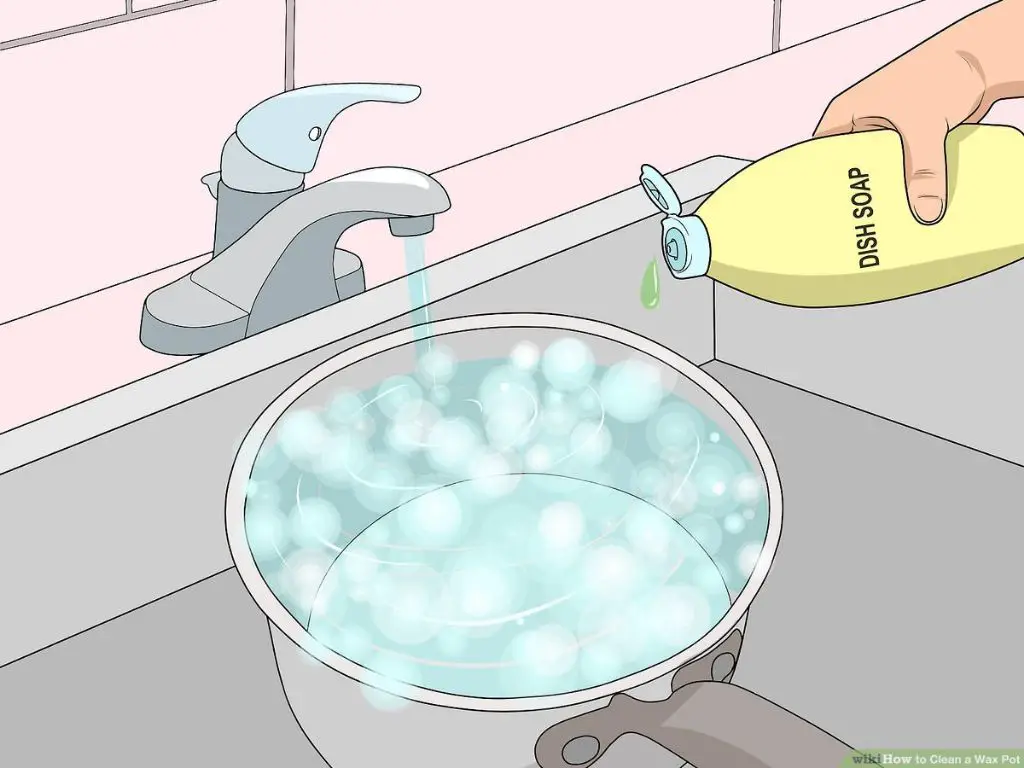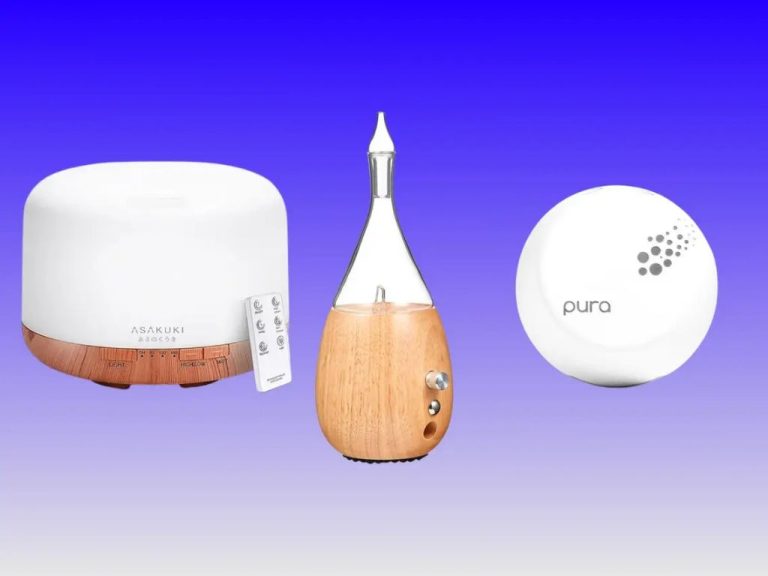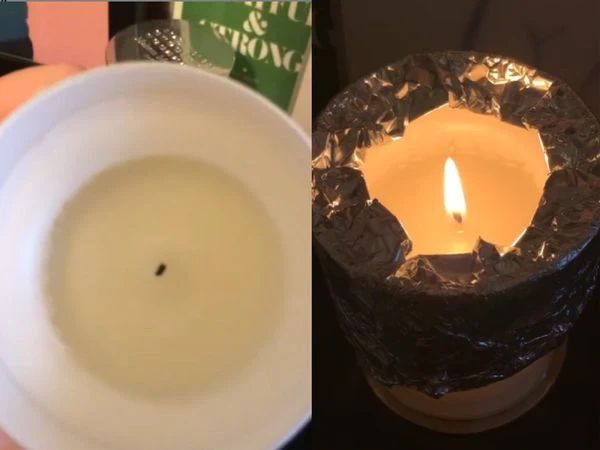Can I Clean My Wax Pot With Alcohol?
A wax pot is a device used to melt and maintain wax at a precise temperature. It is an essential tool for waxing services in salons and spas. Wax pots allow estheticians to melt hard wax beads into a viscous liquid that can then be applied smoothly to the skin for hair removal.
The wax pot heats up and keeps the wax at the ideal temperature needed for application. This prevents the wax from hardening too quickly when applied to the skin. Estheticians dip applicators into the wax pot to coat them before applying the wax in thin, even layers on the area being waxed. The wax adheres to the hair and skin when applied, then hardens slightly as it cools. The hardened wax can then be removed, pulling the hair out by the roots. This leaves smooth, hair-free skin behind.
Keeping the wax pot clean is crucial for proper waxing services. Built-up residue in the pot can lead to unsanitary conditions and alter the wax’s effectiveness. Routine cleaning maintains the integrity of the wax and allows for precise temperature control during treatments.
Reasons to Clean a Wax Pot
Regular cleaning of wax pots is crucial for several reasons. One of the main reasons is to prevent the buildup of wax residue. As wax is heated and poured from the wax pot repeatedly, some wax will inevitably remain behind. Over time, this builds up into a thick layer of difficult to remove residue. If left unchecked, this residue can affect the pot’s ability to heat wax properly and evenly. Additionally, built-up layers of old wax can harbor bacteria and other contaminants. For hygienic waxing practices, the interior of wax pots needs regular cleaning to prevent residue buildup.
Cleaning wax pots also helps maintain them in good working order. Wax residue, if allowed to accumulate, could clog components of the pot like pouring spouts. Cleaning prevents pot malfunctions. Proper maintenance extends the life of waxing equipment as well. With routine cleaning, wax pots will last for years of frequent use rather than needing premature replacement if neglected.
For professional waxers, clean equipment conveys a sense of care, hygiene and professionalism to clients as well. Visibly dirty wax pots covered in wax debris do not inspire confidence. Equipment that is well-maintained helps put customers at ease.
Cleaning Materials
When cleaning a wax pot, some key materials you’ll need are isopropyl alcohol, cotton pads, and towels. Isopropyl alcohol, also known as rubbing alcohol, can be effective at dissolving and removing wax residue from surfaces. It is recommended to use a 90% or higher concentration isopropyl alcohol for cleaning wax pots.
Make sure to use cotton pads instead of regular tissue or paper towels, as the cotton material will be more effective at picking up melted wax. The cotton won’t shred or leave behind fibers like paper towels. You’ll also want some clean microfiber cloths or terry cloth towels on hand. The towels will help absorb and wipe away excess alcohol and wax residue.
According to experts at Dr. Beasley’s Car Care Products, “Wax is an oily, slick substance, so it should be removed with a degreaser. Yes, isopropyl alcohol has some degreasing and cleaning properties…” (Source). When using isopropyl alcohol and cotton pads to clean a wax pot, make sure to use gentle, circular motions to dissolve the buildup and absorb it into the pads.
Safety Precautions
When cleaning your wax pot, it’s important to take some safety precautions. Here are some tips:

- Work in a well-ventilated area – Make sure you have good airflow when cleaning the wax pot, as some cleaning solutions can produce fumes. Open windows or turn on fans to keep the air circulating.
- Wear gloves – Gloves will protect your hands from the cleaning solutions. Use rubber gloves rather than cloth gloves.
- Unplug the wax pot – Make sure to unplug the wax pot before cleaning so there is no risk of electric shock.
- Allow wax pot to fully cool – Let the wax pot cool completely before attempting to clean it. Hot wax can cause burns.
- Read and follow instructions – Carefully read the instructions for any cleaning solutions you use and follow them closely.
- Work carefully – Take your time and be careful when scrubbing and cleaning the wax pot to avoid injury.
Taking appropriate precautions will help make cleaning your wax pot safe and effective.
Cleaning the Exterior
The exterior of a wax pot can get coated in a layer of wax residue over time. To clean the outside of your wax pot, wipe it down with a cloth dampened in isopropyl alcohol or rubbing alcohol. Using an alcohol-based cleaner helps cut through wax buildup and will leave your pot’s exterior sparkling clean.
When using a cleaning pad dampened with alcohol, be sure to use a gentle, circular rubbing motion on the stained areas. The cleaning pad may need to sit and soak for a minute or two on tougher spots before the wax starts wiping away.
For best results, clean your wax pot’s exterior after each use. This prevents wax residue from building up and getting caked on. Quick regular wipe downs with alcohol keep the outside of your wax pot looking its best.
According to wikiHow, you can “Use a cotton pad dampened with rubbing alcohol to wipe clean the outside of the wax pot.” This helps remove wax residue without damage to the pot’s surface.
Cleaning the Interior
The interior of the wax pot is where wax can build up over time and solidify. It’s important to fully clean out this built-up wax to allow the wax pot to function properly.
To clean the interior:
- Unplug the wax pot and allow it to fully cool.
- Use a wax scraper, chopstick, or other long skinny instrument to scrape off any built-up solid wax from the sides and bottom of the pot.
- Once you’ve removed all the solid chunks, soak a lint-free cloth or pad in isopropyl alcohol and scrub the interior walls and bottom to remove stubborn wax residue. The alcohol will cut through and dissolve any remaining wax. According to WikiHow, “Wipe your pot with wax cleaner or mineral oil and wipe it down,” which alcohol can substitute for (source).
- Wipe the interior clean with a dry cloth.
Be sure to get into all the nooks and crannies when cleaning. Removing all the built-up wax will allow your wax pot to melt and disperse wax properly during use.
Unclogging the Spout
Over time, wax residue and bits of wick can build up and clog the pour spout of your wax melting pot. This can make it difficult to pour wax smoothly and evenly. Using a pipe cleaner and isopropyl alcohol is an easy and effective way to unclog the spout.
Start by heating the wax pot and melting any existing wax inside. Once melted, turn off the heat and allow it to cool slightly so the wax is still liquid but not dangerously hot.
Take a pipe cleaner and dip it into some 99% isopropyl alcohol, being sure to fully saturate the bristles. Insert the pipe cleaner into the pour spout and scrub the inside of the spout vigorously to loosen any clogged wax.
You may need to dip the pipe cleaner in alcohol a few times to sufficiently dissolve all the built up wax. Keep inserting and removing the pipe cleaner until the spout is fully cleared.
The alcohol breaks down the wax residue while the pipe cleaner bristles provide abrasion to scrub the spout walls. This should allow smooth pouring once again. Be sure to fully dry the spout before reheating and repouring wax.
If clogs persist, you can try a wire pricker tool or higher temperature wax to fully melt and dislodge debris (Source). But regular cleaning with a pipe cleaner and alcohol should keep the spout clear.
Cleaning the Heating Element
The heating element is one of the most important parts of the wax pot to keep clean. Built up wax residue on the heating element can cause it to not heat properly or evenly. It’s crucial to let the heating element cool completely before attempting to clean it.
To clean the heating element:
- Unplug the wax pot and allow the heating element to cool completely. This may take several hours.
- Once cool, use a soft cloth or cotton swab dipped in isopropyl alcohol to gently wipe the heating element surface. Take care not to scratch or damage the element.
- Remove any dried wax deposits carefully. You may need to dip the swab in alcohol a few times to fully dissolve the wax.
- Make sure to get into crevices and corners where wax may accumulate.
- Allow the heating element to fully dry before plugging in and using the wax pot again.
Be very gentle when cleaning the delicate heating element. Don’t use any abrasive cleaners or scrubbing devices which could damage it. With proper care, regularly cleaning the heating element will help keep your wax pot working safely and efficiently.
Maintenance
Regular maintenance is key to keeping your wax pot clean and functioning properly. It’s recommended to change the wax every 4-6 weeks according to this source. Old wax can harbor bacteria and debris. When changing the wax, first unplug the warmer and allow it to fully cool. Carefully pour out the old wax into a heat safe container. Use a paper towel to wipe out any excess wax or residue. Adding new wax regularly prevents buildup and keeps scents fresh.
It’s also important to strain debris from the wax as it melts. Small wick pieces, dust, or other particles can clog the wax pot over time. Place a small strainer, cheesecloth, or paper towel over the wax pot spout when pouring in new wax. Let the wax melt fully, then carefully remove any debris caught in the filter. Doing this each time prevents debris accumulation and keeps the wax pure for an optimal scent throw.
Conclusion
In summary, it is important to regularly clean your wax pot to ensure it functions properly and provides the best waxing results. By following the key steps outlined in this guide – cleaning the exterior, interior, spout, and heating element – you can remove built-up residue and prevent clogs. Use only recommended cleaners like wax cleaner, mineral oil, or isopropyl alcohol to safely dissolve wax without damaging your pot. Take proper safety precautions like unplugging the pot, allowing it to fully cool, and wearing gloves. With routine cleaning and maintenance, your wax pot will run smoothly for many waxing sessions.




